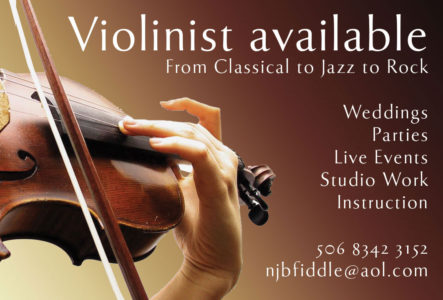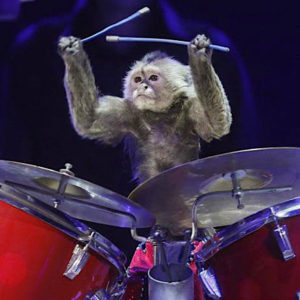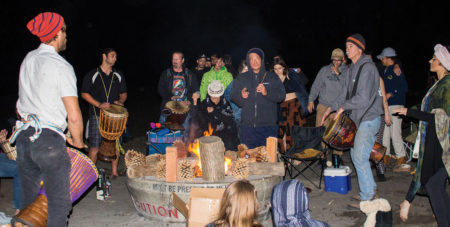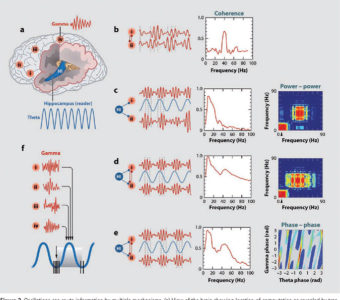Rhythm
 One year, during a particularly dismal rainy season here, several of my lady friends organized aerobic and dance and step classes so they could get their exercise fix. Being the nice, inclusive types that they are, they invited me join in their sessions, which started at some ungodly early part of the day, like 8:00 am. Frankly, I prefer to indulge myself in being grumpy in the morning, but I eventually lighten up and surface into niceness behind a couple of cups of strong coffee, a cigarette or two, and some loud music. By then it’s more like brunch time, so needless to say, I never actually made it to a class. But one of my friends told me that exercising to music and a strong beat made her feel rhythmic, and it was clearly some kind of personal breakthrough. People often argue with me when I say everyone has music inside of them, but it is true. It is also true that we all have rhythm inside of us.
One year, during a particularly dismal rainy season here, several of my lady friends organized aerobic and dance and step classes so they could get their exercise fix. Being the nice, inclusive types that they are, they invited me join in their sessions, which started at some ungodly early part of the day, like 8:00 am. Frankly, I prefer to indulge myself in being grumpy in the morning, but I eventually lighten up and surface into niceness behind a couple of cups of strong coffee, a cigarette or two, and some loud music. By then it’s more like brunch time, so needless to say, I never actually made it to a class. But one of my friends told me that exercising to music and a strong beat made her feel rhythmic, and it was clearly some kind of personal breakthrough. People often argue with me when I say everyone has music inside of them, but it is true. It is also true that we all have rhythm inside of us.
 Hello, how about that ever-present heartbeat? It marches along with very little influence from us and permeates our entire body. Respiration—we breathe in, we breathe out, we breathe in, we breathe out. Most of the time these things happen without our even noticing them and it takes doctors with high tech machines to determine deviations in our silent but ever present body rhythms. Brain waves, nerve impulses, glandular releases, and even our throbbing pain sites. Synapses’ firing, adrenaline being released, cells multiplying, hair growing—geez we’re probably just a cacophony of wacko sounds if we could just hear it all. All of these body functions respond to outside stimulus as well, whether it’s exercise, coffee, discomfort, temperature, fear, joy, or listening to Carlos Santana. And until we’re pushing up daisies they just keep on playing their own part in the rhythm section.
Hello, how about that ever-present heartbeat? It marches along with very little influence from us and permeates our entire body. Respiration—we breathe in, we breathe out, we breathe in, we breathe out. Most of the time these things happen without our even noticing them and it takes doctors with high tech machines to determine deviations in our silent but ever present body rhythms. Brain waves, nerve impulses, glandular releases, and even our throbbing pain sites. Synapses’ firing, adrenaline being released, cells multiplying, hair growing—geez we’re probably just a cacophony of wacko sounds if we could just hear it all. All of these body functions respond to outside stimulus as well, whether it’s exercise, coffee, discomfort, temperature, fear, joy, or listening to Carlos Santana. And until we’re pushing up daisies they just keep on playing their own part in the rhythm section.

Then there’s the rhythms that are all around us, whether we are city dwellers or living on a beach. The tides and movements of the ocean, birds singing in the morning, raindrops on a tin roof, cicadas beating their wings, car alarms beeping in the night, the purring of a good truck on a lonesome road, the guy next door methodically and annoyingly raking his leaves…
 Rhythm is defined as “any measured flow or movement, symmetry…the variation of the length and accentuation of a series of sounds or other events.” Scientists have studied the ability of human beings to keep time or to follow a beat with brain imaging. Apparently it depends on interaction between the auditory and the dorsal pre-motor cortex and this only happens in the human brain. And, oddly enough, in some types of parrots. Normally I would make a crack right here about monkeys and drummers, but Swedish researchers have found a correlation between a person’s intelligence and their ability to tap out a simple regular rhythm. Could this mean all those drummer jokes are off the mark?
Rhythm is defined as “any measured flow or movement, symmetry…the variation of the length and accentuation of a series of sounds or other events.” Scientists have studied the ability of human beings to keep time or to follow a beat with brain imaging. Apparently it depends on interaction between the auditory and the dorsal pre-motor cortex and this only happens in the human brain. And, oddly enough, in some types of parrots. Normally I would make a crack right here about monkeys and drummers, but Swedish researchers have found a correlation between a person’s intelligence and their ability to tap out a simple regular rhythm. Could this mean all those drummer jokes are off the mark?
How can you tell if the stage is level? The drummer is drooling out of both sides of his mouth…
Various cultures and our exposure to them dictate somewhat how we perceive rhythm, but the bottom line is the world is just a big ole’ pulsating throbbing living rhythmic entity. A shared musical or rhythmic experience unites us all in similar movements, with many physical and mental benefits coming from our communal participation. I imagine guys sitting around a bonfire thousands of years ago banging on a saber tooth tiger skin with a bison bone—much like what happens on the beach here late on Saturday night! Rhythm turns listeners into participants and makes listening active and physical. It also synchronizes the brains, minds and emotions of everyone taking part. As soon as you place more than one element on a real or imaginary page, you create a pattern, and a pattern is the seed of rhythm whether you planned it or not. Rhythm activates space. It creates a mood. We crave it, use it to communicate with each other, and move to it. And it provides drummers with work and a paycheck.
What do you call a beautiful woman on the drummers arm? A tattoo…
 Musicologists and folks way smarter than me have tried to trace the influences of particular rhythms—many of the roots are geographical—African, Asian, Indian, Caribbean, and Latin, just to sight a couple of the hundreds of ‘named’ rhythms. There is a vocabulary and written notation for rhythms, just like for musical melodies or construction—an expert can write out just about anything they can imagine. Syncopation is just a displaced beat, where the accent occurs in an unexpected place. Counterpoint is where groups of musicians play together and combine different rhythms, like where a melody is sung over an established pattern. Fascinating stuff.
Musicologists and folks way smarter than me have tried to trace the influences of particular rhythms—many of the roots are geographical—African, Asian, Indian, Caribbean, and Latin, just to sight a couple of the hundreds of ‘named’ rhythms. There is a vocabulary and written notation for rhythms, just like for musical melodies or construction—an expert can write out just about anything they can imagine. Syncopation is just a displaced beat, where the accent occurs in an unexpected place. Counterpoint is where groups of musicians play together and combine different rhythms, like where a melody is sung over an established pattern. Fascinating stuff.
How is a drum solo like a sneeze? You know it’s coming but there’s nothing you can do about it…
 Things aren’t so primal anymore and most folks experience music as listeners in a social activity—like when they go to a concert, sing at church, attend a music festival, or when they’re just out driving around with their pals beating on the dashboard and singing along to Queen. Hard to resist at least tapping your foot. Religious fervor is often inspired by the same irresistible beats that produce trance-like states among voodoo practitioners or stoned rock and rollers. We see the roots and the influence of rhythm in work songs of every sort—songs that probably began with the beginnings of agriculture. Tilling the soil, hoeing and threshing—all required the combined and synchronized efforts of a group of people. Doing this hard work to the beat of a drum or while chanting made the work somehow easier and more communal.
Things aren’t so primal anymore and most folks experience music as listeners in a social activity—like when they go to a concert, sing at church, attend a music festival, or when they’re just out driving around with their pals beating on the dashboard and singing along to Queen. Hard to resist at least tapping your foot. Religious fervor is often inspired by the same irresistible beats that produce trance-like states among voodoo practitioners or stoned rock and rollers. We see the roots and the influence of rhythm in work songs of every sort—songs that probably began with the beginnings of agriculture. Tilling the soil, hoeing and threshing—all required the combined and synchronized efforts of a group of people. Doing this hard work to the beat of a drum or while chanting made the work somehow easier and more communal.
Please please please, get out and commune with or at least listen to the many fine local players here in Dominical before the rains hit and we don’t have as many options! It will be good for your health, you’ll make some new friends, and we will always be grateful for your support! You too can have rhythm!
What do you say to a drummer in a 3-piece suit? “Will the defendant please rise…”
Music and rhythms find their way into the secret places of the soul. Plato
I’m just sitting here trying not to be unhappy. Lars Ulrich, Metallica drummer
Jazz should be danceable. That’s the original idea, and even when it’s too fast…it should always be rhythmic enough to make you wanna move. When you get away from that movement, you get away from the whole idea. Dizzie Gillespie
